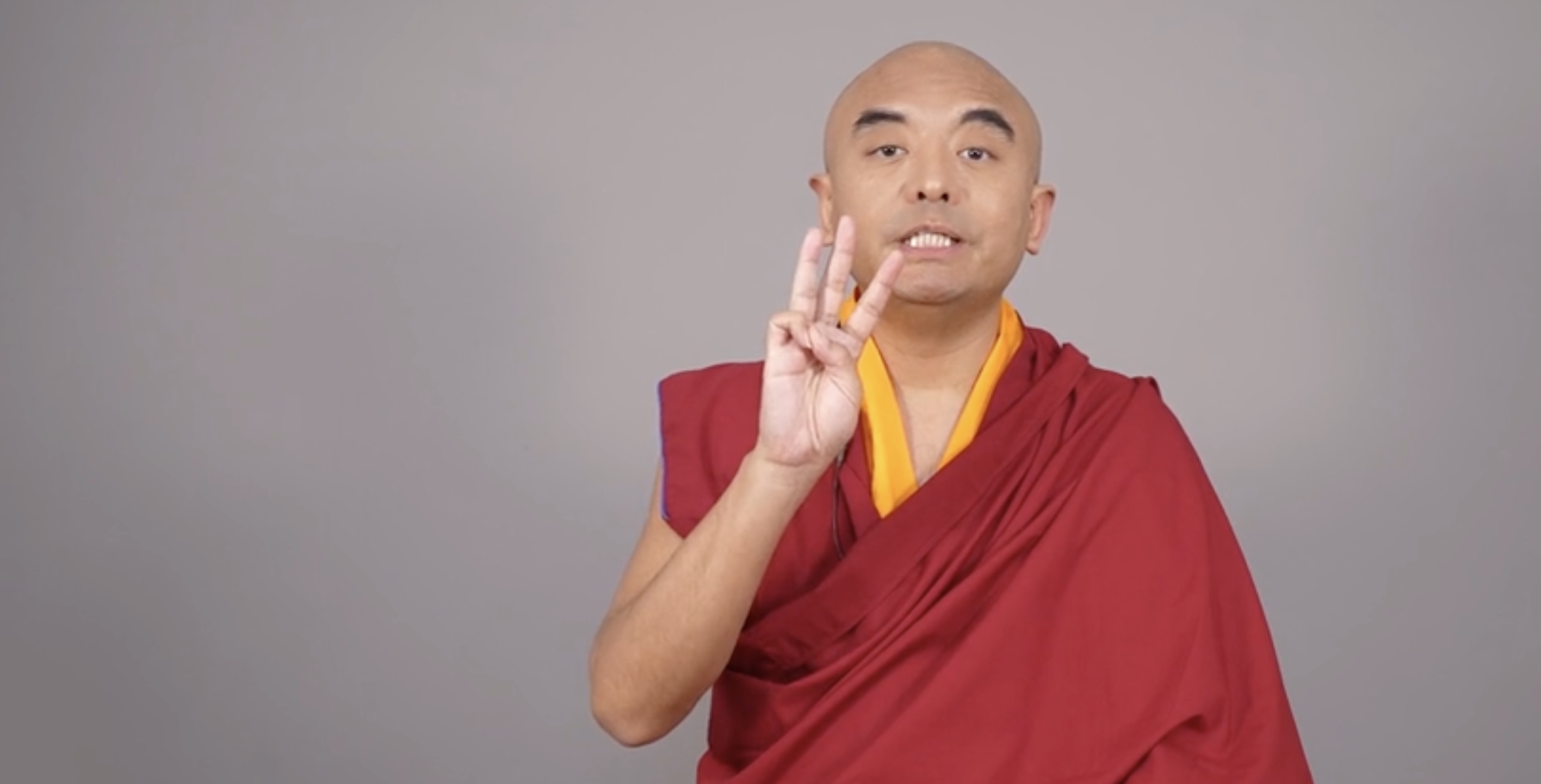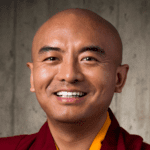When people ask me about meditation, they often say, “Rinpoche, I want to meditate, but my emotions get in the way.” I always tell them: emotions are not obstacles to meditation. They are the very path.
The Buddha himself discovered this. As a prince, he had everything — a palace, wealth, comfort — but he was still dissatisfied. He asked, Everything is going well. Why am I still not satisfied? Where does all this suffering come from? Later, after years of study and austere practice, he sat under the Bodhi tree and remembered a childhood moment under a rose apple tree. As a boy, simply resting in presence, he had felt a natural ease: nothing to get rid of, nothing to create, just awareness as it is. That memory opened the door to enlightenment.
In the Vajrayana tradition, we say that our true nature is already pure and complete. But when we forget this, emotions like anger, jealousy, and pride cloud the mind. The good news is that these emotions themselves can lead us back to our true nature. In fact, there are three main ways to work with emotions: removing, transforming, and transcending.
Removing: Creating the Right Conditions
The first way is very practical: we learn to avoid or reduce the conditions that stir up strong emotions. In early Buddhist teachings, this is called the removing or abandoning style.
Imagine you’re meditating and keep falling asleep. One simple method is to stand up, walk around, or open a window. Doing this will “remove” the sleepiness. Another version of this approach is to remove the conditions that trigger a reaction. If you’re distracted by your smartphone at bedtime, put it in another room. Here again, you’ve removed distraction, the unwholesome state of mind. These adjustments are not yet deep wisdom — they are like changing the outer conditions so the mind can settle.
Sometimes people think this is not “real meditation,” but it is very important. The Buddha himself taught many precepts to help us avoid harmful environments and behaviors. When emotions are strong, it can be wise to step back, breathe, and change the situation.
Practice: The Removing Method
- Next time you feel overwhelmed by sleepiness, anger, or craving, don’t force yourself to “fix” it with meditation.
- Instead, change one condition: move your body, adjust your posture, take a short walk, or shift your focus.
- Notice how small changes can reduce the power of an emotion.
The removing style is like taking the thorns out of your shoes before walking. You don’t have to carry the pain unnecessarily.
Transforming: Turning Poison into Medicine
The second way is subtler and more powerful. In Vajrayana, we say, “Poison becomes medicine.” Instead of pushing emotions away, we bring them onto the path.
For example, take ignorance. When the mind feels foggy, confused, or dull, it can be frustrating. But ignorance also has a good quality — it is non-judgmental. When you rest with that quality, it becomes openness, the wisdom of vast space.
Or take anger. Anger can be painful and destructive, but within anger there is also energy, clarity, and vividness. If you work with it skillfully, anger transforms into mirror-like wisdom.
One of my favorite practices here is tonglen — taking and sending. When you feel anger, imagine breathing in the anger of all beings, dissolving it into your own. Then breathe out love, compassion, and joy to all beings. At first, this may sound frightening — “Rinpoche, I don’t want more anger!” — but what happens is the opposite. The anger itself becomes the source of compassion. The poison becomes medicine.
Practice: Transforming with Tonglen
- Sit quietly and bring to mind a difficult emotion, like anger or fear.
- Breathe in, imagining that you take in the same suffering from all beings. Let it dissolve in your heart.
- Breathe out, sending love, compassion, and peace to yourself and everyone.
- Continue for a few minutes, letting the emotion soften into care.
When we do this, emotions stop being enemies. They become teachers. They remind us of our shared humanity and open the door to compassion.
Transcending: Seeing the True Nature
The most profound method is to look directly into the emotion itself and recognize its nature. This is called transcending style. Knowing the nature of reality as it is.
Normally, when anger or craving arises, we believe it is solid: I am angry. I am jealous. But if we look closely, what do we find? Anger is not one thing. It is made of many parts: a sensation in the chest, an image of the person who hurt us, some inner words, and a belief that, for instance, “I was wronged.” Put together, these parts feel like something solid, but when you look more closely, you see that it’s not solid at all. It’s just like shaving foam. It looks solid, but when you touch it, it dissolves!
This is what the Buddha called emptiness. Emptiness is not nothingness. It points to the fact that things are not as real and solid as they often seem. The best solution to be totally free from suffering is recognizing emptiness. Just like in a dream, things appear vivid but are not truly real. You might dream of eating pizza: you see it, smell it, taste it, and even burn your tongue if it’s too hot. Yet when you wake up, where is the pizza? It was vivid but empty. It was not as solid and real as it seemed in the dream.
In the same way, when you look into an emotion, you see that it has no fixed essence. It appears, and yet it is empty. And within that emptiness is wisdom.
Practice: Looking into Anger
- Bring to mind a recent moment of anger. Let it arise gently.
- Ask yourself: Where is the anger? In my chest, my head, my mind?
- Then ask: What is anger made of? Sensations? Images? Words? Beliefs?
- Notice how the pieces shift and dissolve. The solid anger cannot be found.
- Rest in the spacious awareness that remains — clear, open, and free.
This is transcending: not following the emotion, not fighting it, but seeing its true nature. When we recognize this, emotion liberates itself, and what remains is the wisdom of that emotion.
From Kleshas to Wisdom
In Vajrayana, we speak of the five kleshas: ignorance, anger, pride, desire, and jealousy. These are usually seen as poisons, the roots of suffering. But each klesha also contains a seed of wisdom. Ignorance, when seen clearly, reveals the spacious wisdom of openness. Anger transforms into mirror-like wisdom. Pride becomes the wisdom of equality. Desire turns into discriminating wisdom, able to see the unique qualities of each being and thing. And jealousy ripens as all-accomplishing wisdom, the fearless energy to benefit others. With the methods of removing, transforming, and transcending, every emotion — no matter how painful — can become the doorway to its corresponding wisdom.
The Three Together
So which method is best — removing, transforming, or transcending? The answer is all of them.
When emotions are overwhelming, start with removing. Create safe, supportive conditions. Once you are more stable, use transforming: turn the emotion into compassion and wisdom. And when the mind is ready, look directly into the emotion’s essence and see its emptiness.
In my own practice, I use all three methods, sometimes in a single meditation session. For example, if I feel sleepy, I may open the window (removing). If restlessness comes, I may do tonglen (transforming). And when clarity returns, I may look directly into the emotion (transcending).
Emotions as Gateways
When I was young, I suffered terrible panic attacks. I never believed I had buddha nature. But by working with my panic using these three styles, I came to see that emotions are not the problem. The problem is believing they are solid and permanent.
Now, when I teach around the world, I tell people: Every time you blink your eyes, every breath you take, you are looking for happiness and freedom from suffering. That very longing is the sign of your buddha nature calling you home.
So don’t be discouraged by emotions. Anger, fear, jealousy, pride — each is a gateway. With skill, we can remove what is unhelpful, transform poison into medicine, and transcend by recognizing the luminous emptiness of mind.
As the Buddha said after his awakening: “Profound, peaceful, luminous, uncontrived.” That nature is already within you. And emotions, when worked with skillfully, can reveal it.

